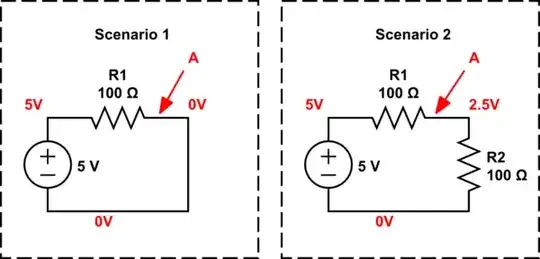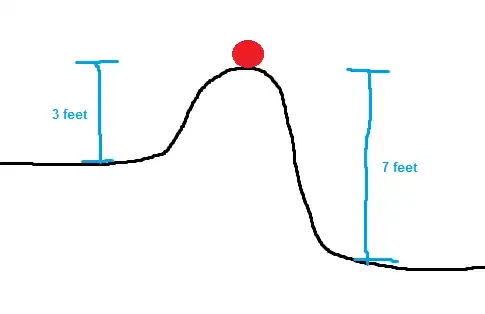How is it possible that in scenario 1 resistor R1 converts 5V of energy to heat and in scenario 2 the same resistor R1 converts 2.5V of energy to heat?
The resistor R1 in both scenarios are exacly the same, I don't seem to grasp what happens on the physical level to the electrons how they "know" when to dump all their energy at once in resistor R1 in scenario 1 or to divide the energy they have proportionally over the resistors R1 and R2 in scenario 2.
I have read an explenation here, but it's still not clear. How is it possible that the voltage is different at point A going through the same amount of resistance? I would expect a linear relation between voltage and resistance.
Could someone explain what physically happens that causes this?

simulate this circuit – Schematic created using CircuitLab
Edit
Is my understanding right? According to here
The resistance drops liniar along the path.
In scenario 1 at the start of R1 the resistance the current encounters is 100\$\Omega\$ and at the end of R1 it encounters 0\$\Omega\$.
In scenario 2 at the start of R1 the resistance the current encounters is 200\$\Omega\$ and at the end of R1 it encounters 100\$\Omega\$.
If this is true, why does point A in scenario 2 have more volt left if it has encountered a higher resistance of 200\$\Omega\$ at the beginning opposed to scenario 1 where it encountered 100\$\Omega\$ at the beginning?

If you have u shaped piece of pipe and pour water in at one end you end up with the water staying in the pipe. But the start of the pipe is the same so how does the water you're adding know that it's supposed to stop and not keep flowing downwards?
– Andrew Feb 09 '17 at 11:416.25x10^18 electrons, so the formula is when flattenVolts = Joules / (charge of 6.25x10^18 electrons)is this correct? but both are measurements of energy right? – Ronald Feb 09 '17 at 13:07